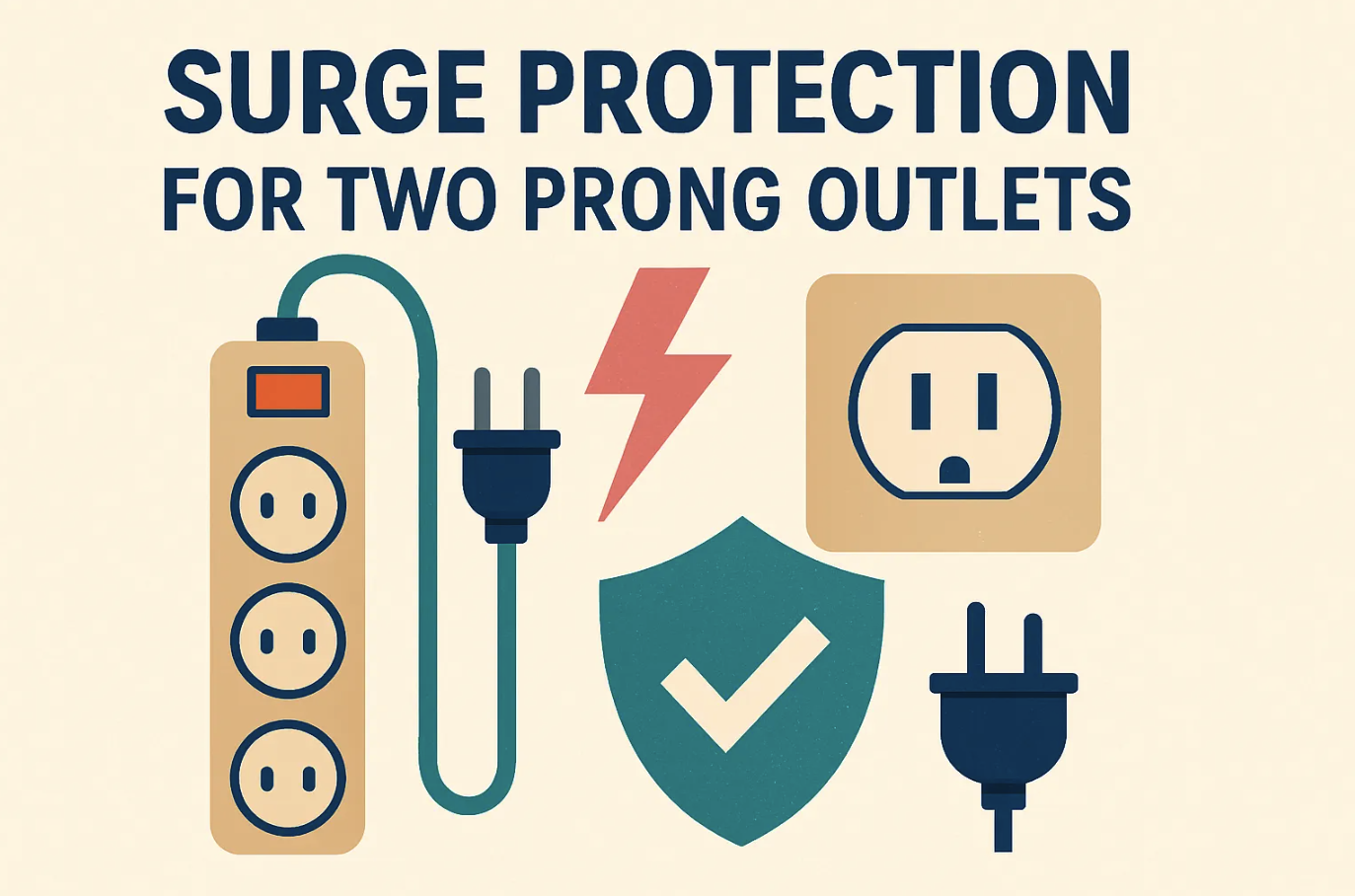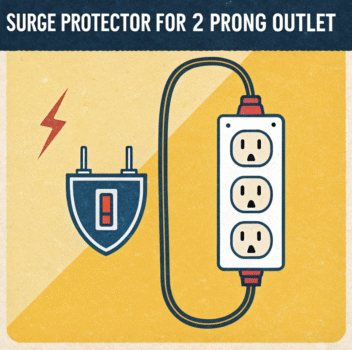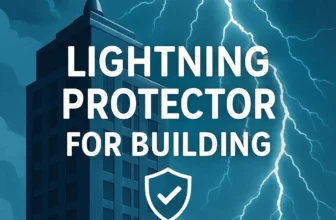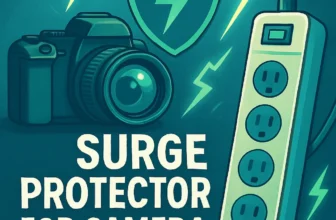Published By: Marc Edwards | Last updated on July 16, 2025 and reviewed by Editorial Team

Power surges can strike without warning, causing sudden spikes in voltage that may damage your electronics or appliances. These surges often travel through the easiest paths, like electrical cables, and can occur up to 20 times a day.
If you’re using two-prong outlets, the lack of grounding makes surge protection more challenging.
However, solutions like a surge protector for two prong outlet or upgrading your outlets can help safeguard your devices. Protecting your home from these everyday electrical threats is essential to avoid costly repairs or replacements.
Why Two-Prong Outlets Are Challenging for Surge Protection
Two-prong outlets might seem harmless, but they present unique challenges when it comes to surge protection. Without a grounding wire, these outlets lack the essential safety feature needed to effectively handle electrical surges.
Let’s understand why grounding is so important and how two-prong outlets fall short in protecting your electronics.
The Role of Grounding in Surge Protection
Grounding plays a critical role in keeping your home and devices safe from power surges. When a surge occurs, a grounded outlet provides a safe path for excess electricity to travel. This prevents the surge from damaging your appliances or causing hazardous situations, such as fires.
Think of grounding as a safety net. Surge protectors rely on this net to redirect harmful voltage away from your devices. Without it, the surge protector can’t perform its job properly. For example, lightning surge protection devices work by diverting excess voltage into a grounding wire. Without that wire, the surge has nowhere to go, leaving your electronics vulnerable.
Limitations of Two-Prong Outlets for Modern Electronics
Two-prong outlets were designed for older electrical systems, which didn’t account for today’s advanced electronics. Modern devices, like computers and smart TVs, require more robust protection because they’re more sensitive to voltage fluctuations.
Two-prong outlets simply can’t meet these demands.
The absence of a ground wire in two-prong outlets creates several risks. Electrical surges can flow directly into your devices, causing irreparable damage. Worse, stray currents might lead to shocks or even fires. Using a surge protector with a two-prong outlet doesn’t solve the problem either. Since the surge protector depends on grounding to function, it becomes ineffective in this setup.
If you’re relying on two-prong outlets, you’re leaving your electronics exposed to potential harm. Upgrading to grounded outlets or exploring alternative solutions is essential to ensure the safety of your home and devices.
Risks of Using Unprotected Two-Prong Outlets
Using unprotected two-prong outlets can expose your home and devices to significant risks. These outlets lack the grounding wire that modern electrical systems rely on for safety.
Without proper protection, you could face costly damages or even dangerous situations.
Damage to Electronics from Power Surges
Power surges are unpredictable and can happen at any time. They occur when there’s a sudden spike in voltage, often caused by lightning strikes, faulty wiring, or overloaded circuits. When you use two-prong outlets without a surge protector, your electronics bear the brunt of these surges.
Sensitive components inside devices like laptops, gaming consoles, and smart TVs can be damaged or destroyed instantly. This damage is often irreversible, leaving you with expensive repair bills or the need to replace your devices entirely.
Two-prong outlets don’t provide a safe path for excess electricity to escape. Instead, the surge flows directly into your appliances. Even small, repeated surges can degrade your electronics over time, shortening their lifespan.
Investing in proper surge protection or upgrading your outlets can save you from these headaches.
Safety Concerns with Ungrounded Outlets
Ungrounded outlets pose a risk not only to your electronics but also to your safety. Without a grounding wire, stray currents have nowhere to go. This increases the likelihood of electrocution if you touch an appliance during a surge. The risk becomes even higher in areas with high humidity, such as kitchens or bathrooms, where water can exacerbate electrical hazards.
Fires are another serious concern. Power surges can cause overheating in ungrounded outlets, potentially sparking a fire. This danger is especially alarming in older homes with outdated wiring.
A grounded outlet acts as a safeguard, redirecting excess voltage away from your home’s electrical system. Without it, you’re left vulnerable to these life-threatening scenarios.
Protecting your home starts with understanding these risks. Whether you choose a surge protector designed for two-prong outlets or decide to upgrade to grounded outlets, taking action is crucial. Don’t wait for a surge to remind you of the importance of electrical safety.
Solutions for Surge Protection in Two-Prong Setups
Finding effective surge-protection solutions for two-prong outlets can feel tricky, but you have options. Whether you’re looking for a quick fix or a long-term upgrade, there are ways to protect your electronics and improve safety.
Let’s check out some practical solutions.
Using a Surge Protector for Two Prong Outlet
You might think surge protectors are off-limits for two-prong outlets, but that’s not entirely true. Some surge protectors are specifically designed to work with ungrounded outlets. These models offer basic protection by absorbing excess voltage and reducing the risk of damage to your devices. While they don’t provide the same level of protection as grounded surge protectors, they’re better than leaving your electronics completely exposed.
For example, products like the Tripp Lite Protect It 3-Outlet Surge Protector SK30USB offer compact protection with added features like USB ports for charging your devices. Similarly, Surge-Protected Power Strips allow you to connect multiple devices while offering some level of surge protection.
These options are ideal for temporary setups or areas where upgrading outlets isn’t immediately possible.
However, keep in mind that these surge protectors have limitations. Without a grounding wire, their protection capabilities are reduced. They can handle minor surges but may struggle with larger spikes caused by lightning or major electrical faults.
If you rely on sensitive electronics, consider additional measures for better protection.
Upgrading to Grounded Outlets for Better Protection
For reliable surge protection, upgrading your two-prong outlets to grounded ones is the most effective solution. Grounded outlets include a third prong that connects to your home’s grounding system.
This feature enables surge protectors to operate at their full potential, safely redirecting excess voltage to ground.
Upgrading outlets might sound like a hassle, but it’s a worthwhile investment. Grounded outlets not only enhance surge protection but also improve overall electrical safety. They reduce the risk of shocks, fires, and damage to your devices. Plus, they’re compatible with a wider range of modern surge protectors, giving you more options to safeguard your electronics.
You’ll need a licensed electrician to handle this upgrade. They’ll assess your home’s wiring and ensure the new outlets meet safety standards. While this process involves some upfront costs, it pays off in the long run by protecting your valuable devices and preventing costly repairs.
Alternative Electrical Safety Measures
If upgrading outlets isn’t feasible right now, you can still take steps to improve electrical safety. Start by using low-profile surge protectors or surge protector extension cords. These devices offer additional outlets and USB ports, making it easier to organize your electronics while providing basic surge protection.
Another option is to install a whole-house surge protector. This device connects directly to your home’s electrical panel and provides comprehensive protection against power surges. It works for all outlets, including two-prong ones, and safeguards your entire electrical system. While it doesn’t replace the need for grounded outlets, it adds an extra layer of defense.
Finally, consider protecting specific devices like your modem and router.
A surge protector for modem and router ensures your internet connection stays intact during a surge. This is especially useful if you work from home or rely on streaming services for entertainment.
Taking these steps helps you minimize risks and extend the lifespan of your electronics. Whether you choose a surge protector for two prong outlet, upgrade to grounded outlets, or explore alternative measures, prioritizing surge protection is essential for a safer home.
Two-prong outlets may seem outdated, but you can still protect your home and devices with the right approach. Specialized surge protectors designed for a 2-prong plug offer basic protection, while upgrading to grounded outlets provides a more reliable solution.
Prioritizing safety is essential.
Consult a licensed electrician to explore upgrades or consider whole-house surge protection for comprehensive coverage. Protecting your electronics, especially if you work from home, ensures uninterrupted functionality and peace of mind.
Take proactive steps today to safeguard your home against power surges and avoid costly damage.








